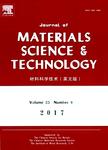Facile Synthesis of Nanocrystal Tin Oxide Hollow Microspheres by Microwave-Assisted Spray Pyrolysis Method
Facile Synthesis of Nanocrystal Tin Oxide Hollow Microspheres by Microwave-Assisted Spray Pyrolysis Method作者机构:State Key Laboratory of Complex Nonferrous Metal Resources Clean UtilizationKunrning 650093China Key Laboratory of Unconventional MetallurgyMinistry of EducationKunrning 650093China Faculty of Metallurgicul and Energy EngineeringKuaming University of Science and TechnologyKunrning 650093China Mineral Resources DepartmentYunnan Tin Company Group LimitedKunrning 650200China
出 版 物:《Journal of Materials Science & Technology》 (材料科学技术(英文版))
年 卷 期:2017年第33卷第8期
页 面:874-878页
核心收录:
学科分类:081702[工学-化学工艺] 07[理学] 070205[理学-凝聚态物理] 08[工学] 0817[工学-化学工程与技术] 080501[工学-材料物理与化学] 0805[工学-材料科学与工程(可授工学、理学学位)] 0702[理学-物理学]
基 金:supported by the project from the National Natural Science Foundation of China(Nos.51264015 and 51404116) the Yunnan Provincial Science and Technology Innovation Talents Scheme-Technological Leading Talent(No.2013HA002)
主 题:Hollow morphology Microwave Nanocrystallites Tin oxide Microstructural characterization
摘 要:Tin oxide(SnO2) hollow microspheres with narrow size distribution were prepared by a facile one-pot microwave-assisted spray pyrolysis method. The effect of temperature on microstructural and optical properties was investigated by X-ray diffraction(XRD), scanning electron microscope(SEM), high resolution transmission electron microscope(HRTEM), and UV-Vis spectrophotometer(UV-Vis), *** SnO2 particles obtained at and above 700?C are tetragonal rutile structure with high purity and smooth surface morphology, which consist of well-interconnected SnO2 nanocrystallines and the shell thickness was about 26 nm. UV-Vis absorption values were quite low in visible light region and high in ultraviolet region, indicating the possible utilization for optical purpose of the as-prepared SnO2. The band gaps were 3.88 and 4.07 e V for SnO2 synthesized at 700 and 800?C, respectively. As compared to traditional electrical heating or flame modes, microwave heating introduced here demonstrates a highefficiency, environmentally benign, and time-and energy-saving technology to synthesize advanced powders.



